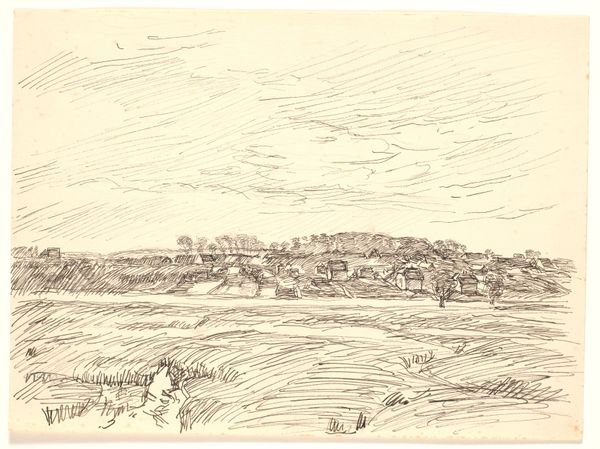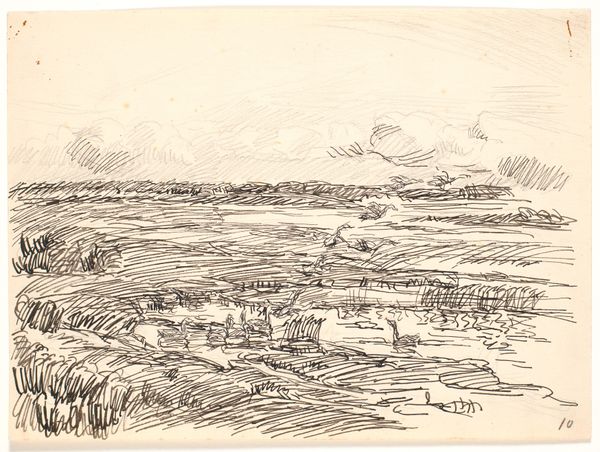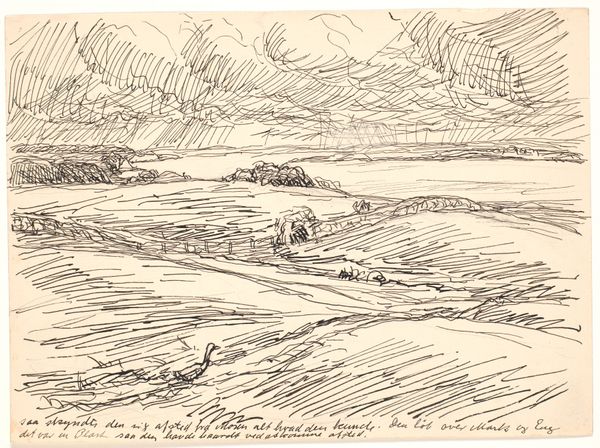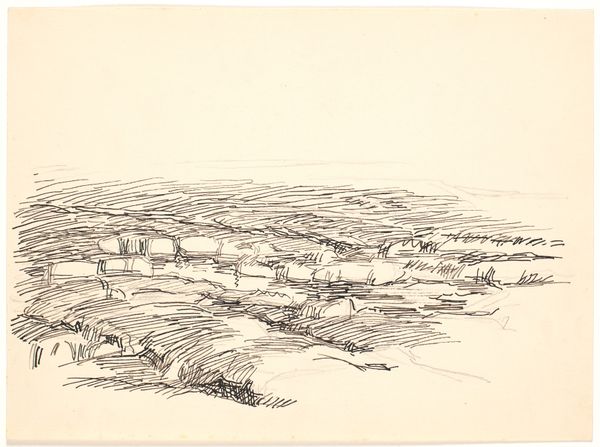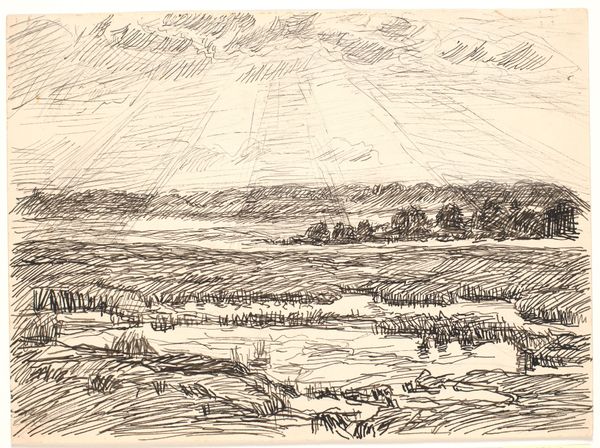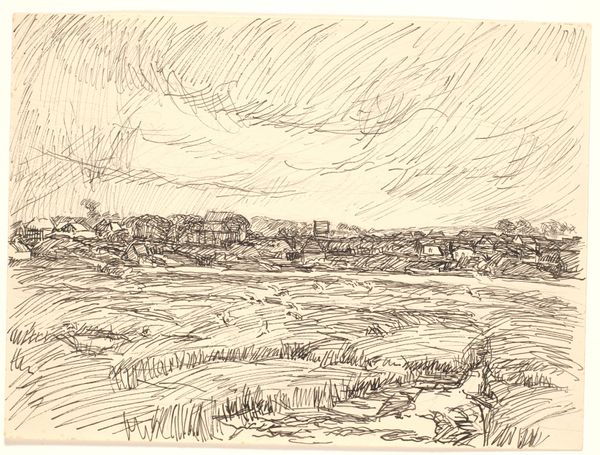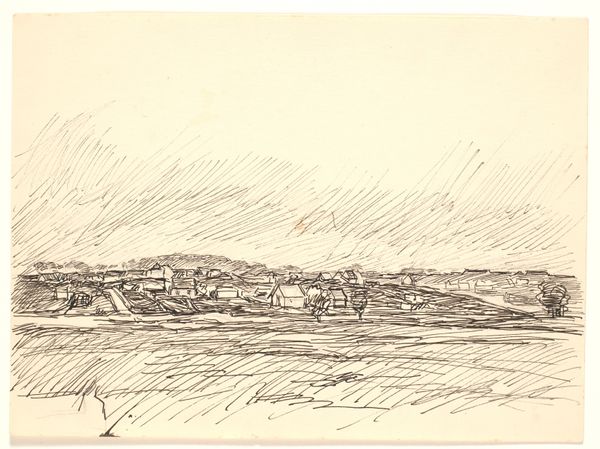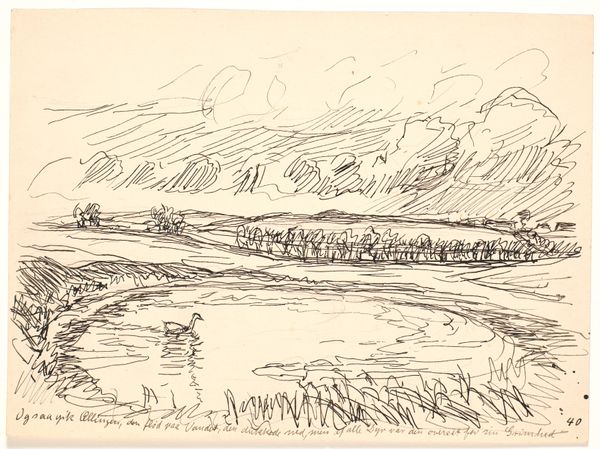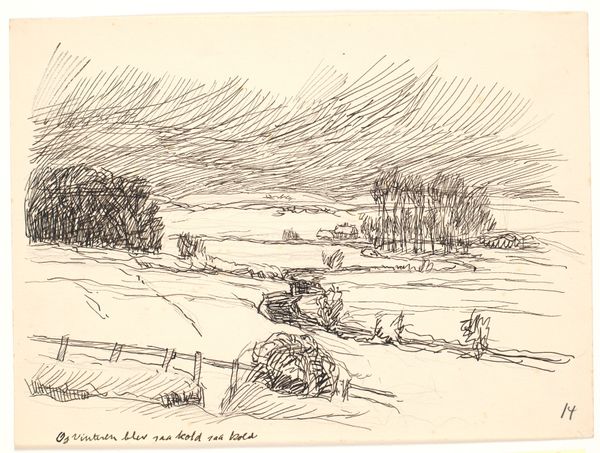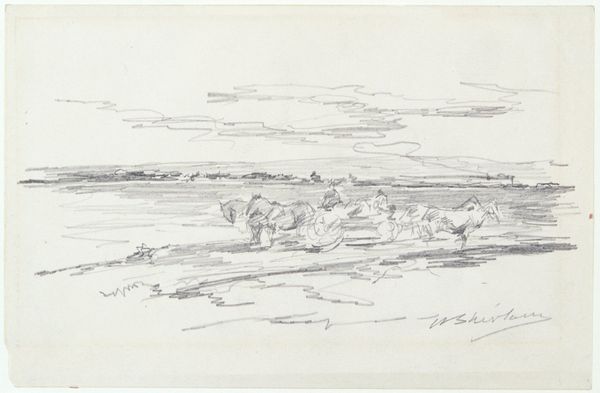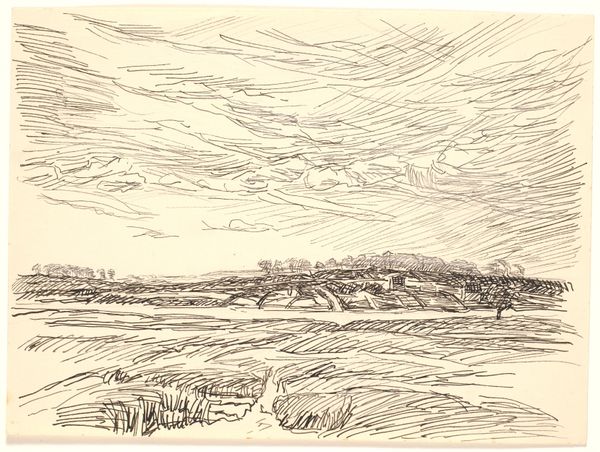
drawing, paper, pencil
#
landscape illustration sketch
#
drawing
#
pen illustration
#
pen sketch
#
landscape
#
paper
#
personal sketchbook
#
ink drawing experimentation
#
pen-ink sketch
#
pencil
#
pen work
#
sketchbook drawing
#
storyboard and sketchbook work
#
sketchbook art
#
realism
Dimensions: 249 mm (height) x 339 mm (width) (bladmaal)
Curator: This drawing by Fritz Syberg, created in 1928, is titled "Midt i Solskinnet laa en gammel Herregaard" which translates to "In the Sunshine Lay an Old Manor." Editor: It’s a sketch, immediately evocative of the Danish countryside; quiet, perhaps a bit melancholy. The foreground is dominated by what seem to be haystacks. Curator: Indeed. This work offers us a glimpse into the social and economic landscapes of rural Denmark in the early 20th century. Note how the placement of the haystacks not only defines the visual perspective but alludes to an ongoing tradition. Editor: And the medium itself. We see pencil and ink on paper, suggesting an immediacy and accessibility—a direct connection to the land and the labor it demands. Consider how different it would feel rendered in oil, a more precious material. Curator: Absolutely. And to understand Syberg's intent, we should recognize that this drawing likely served as a study. It grants us a peek behind the curtain. How the materials shaped and formed this imagery. The artist employs very accessible resources and illustrates that with his talent any commoner can see the same landscapes that he himself experienced. Editor: It speaks to his approach to capturing everyday life. Look at the rough hatching in the sky and around the haystacks – quick, efficient strokes that emphasize texture and light, but also how those simple methods contribute to a somber scene in all reality. Curator: We should also ask: What kind of society values its common lands like this and their continued use? How do we in the twenty first century view landscape with those past connotations still ringing in our mind's ear? Editor: It invites reflection on our relationship with agriculture, manual labor, and rural heritage and how the means of production and our own cultural values reflect such themes. This is how these traditional means of production were like at this manor, Syberg is there only to faithfully copy. Curator: Seeing Syberg’s sketch alongside this interpretation deepens my understanding of the painting’s relationship to cultural heritage, landscape art, and the artist himself. Editor: For me, considering the physical labor behind the agricultural scene makes me better appreciate the artistic labor that went into portraying the moment with only ink, paper and pencil.
Comments
No comments
Be the first to comment and join the conversation on the ultimate creative platform.
